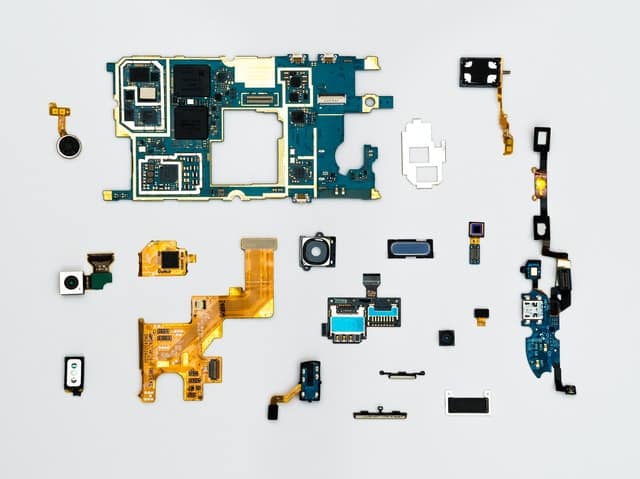Ensure your electrical and electronic equipment meets the EU’s WEEE Directive requirements with F2 Labs. Our comprehensive testing and documentation services help manufacturers and importers demonstrate proper end-of-life waste handling, recycling, and recovery processes, simplifying market access and minimizing environmental impact.
WEEE Directive 2012/19/EU Testing
Broadly, if you are selling products to the EU you may need to actively participate in the reporting requirements of the WEEE Directive 2012/19/EU.
WEEE 2012/19/EU is not a CE marking Directive and if your product is within its scope then it must not carry a CE marking unless it is also subject to and complies with a CE marking Directive (ex. Low Voltage Directive 2006/95/EC). Additionally, compliance with the WEEE Directive must not be referenced on an accompanying declaration of conformity, even if the product is subject to a CE marking Directive which requires a declaration of conformity.
‘WEEE’ is defined in Article 1 as, ‘waste from electrical equipment.’
The goal of the WEEE Directive 2012/1/E is to compel manufacturers and distributors of electrical products to participate in the recycling and collection of electronic equipment at the end of its useful life.
The responsibility for this is placed upon the person who puts the equipment into service in the European Union. Therefore if you are using a distributor then it is the responsibility of the distributor to comply with the legal requirements. However, if you are selling directly to your customers in the EU then it is your responsibility as the manufacturer.
The legal requirements of the WEEE Directive 2012/19/EU are onerous. They include communicating with individual regulatory offices within each member nation in which you place equipment. Some EU member nations have more than one of these offices. Each month the amount of WEEE disposal material placed in each area of responsibility must be reported to the appropriate regulatory office in each region to which you ship your products.
The equipment within the scope of the WEEE Directive 2012/19/EU is indicated in Annex I. Annex I lists equipment for which the compliance requirements are required during the transition period which ends on August 14, 2018.
- Large household appliances.
- Small household appliances.
- IT and telecommunications equipment.
- Consumer equipment.
- Lighting equipment.
- Electrical and electronic tools.
- Toys, leisure, and sports equipment.
- Medical devices (with the exception of all implanted and infected products).
- Monitoring and control instruments
- Automatic dispensers.
More equipment is subject to the WEEE Directive 2012/19/EU at the conclusion of the transition period. This equipment is indicated in Annex III and is subject to WEEE Directive 2012/19/EU beginning on August 15, 2018.
Annex III equipment is listed as:
- Temperature exchange equipment
- Screens, monitors, and equipment containing screens having a surface greater than 100 square cm.
- Lamps.
- Large equipment (defined as having any external dimension more than 50 cm).
- Small equipment (defined as having no external dimension more than 50 cm).
- Small IT and telecommunication equipment (no external dimension more than 50 cm).
WEEE Directive 2012/19/EU is more inclusive than RoHS. Article 2 (1) (a) defines the scope of the WEEE Directive as limited to the list in Annex I, with respect to the exclusions indicated in Article 2 (3) & (4).
The Article 2 (3), (4) exclusions are:
- Military equipment.
- Equipment designed to be sent into space.
- Equipment designed to be installed as part of the equipment that is not within the scope of the WEEE Directive. This exclusion only applies to equipment that is specially designed for excluded equipment.
- Large-scale stationary industrial tools.
- Large-scale fixed installations.
- Means of transport for persons or goods, excluding electric two-wheeled vehicles which are not type-approved.
- Non-road mobile machinery is made available exclusively for professional use.
- Active implantable medical devices.
- Photovoltaic panels are intended to be used in a system that is designed, assembled, and installed by professionals for permanent use at a defined location to produce energy from solar light for the public, commercial, industrial and residential applications.
- Equipment specifically designed solely for the purposes of research and development is only made available on a business-to-business basis.
In order to determine if your equipment is considered as one of the types of equipment indicated in Annex I or Annex III, it is suggested that you review Annex II and Annex IV. Descriptive lists of sample equipment can be found in those sections.
Once you determine if your equipment is within the scope of the WEEE Directive you next must look at how the EU views your role in this process, as defined by the Directive. Article 16 states that “producers”, including producers selling by distance communication, “shall be registered in the Member State that they sell to”. Producers, for the purpose of the WEEE Directive 2012/19/EU, are defined in Article 3 (1) (f). To be considered a producer you either must be physically located in the EU and selling in the EU or you must sell directly to your customers. Therefore: using a distributor relieves the burden of WEEE 2012/19/EU compliance from you and puts it solely on the distributor. This is because the distributor assumes the role of producer and is therefore compelled to comply with WEEE 2012/19/EU for that product.
However, if you are selling WEEE disposal directly to Europe you will need to perform the duties outlined in Article 16. Most manufacturers who sell directly and are complying with WEEE Directive 2012/19/EU do so by contracting with one of a number of 3rd parties which have set up a compliance scheme. These 3rd parties have set the infrastructure up to support the required monthly reporting to the various regulatory offices in the individual EU municipalities responsible for recording the information.
F2 Labs sales and engineering staff are always available to assist you with your European projects. We can talk with you regarding these WEEE disposal laws and offer our best guidance.
